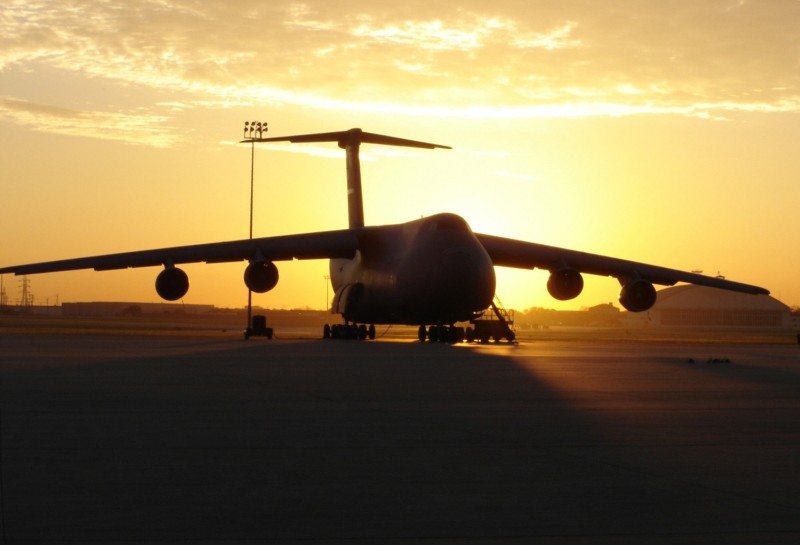A new, five-year strategic plan unveiled today at U.S. Transportation Command will posture it to ensure the military maintains its global mobility edge entering a post-war future, Air Force Brig. Gen. John E. Michel, Transcom’s chief change and learning strategist, told American Forces Press Service.
Air Force Gen. William M. Fraser III, Transcom’s commander, shared the most-sweeping strategic planning effort in the command’s 25-year history today with his staff at Scott Air Force Base, Ill., and, via teleconference, with all of Transcom’s components and partners around the globe.
Calling the plan “a vision for smart change,” Fraser said its bottom line is to enhance a capability unique to the United States: “the extraordinary ability to rapidly project national power and influence — anywhere, at any time.”
Fraser praised his organization for its hard work and dedication that has sustained the force over the past decade of conflict. But looking ahead, he emphasized that Transcom will remain the crucial, although largely unsung, driving force behind everything the military does.
“Transcom is the secret sauce of every other combatant command,” said Michel, who led the strategy development effort. “We make others go. We are kind of invisible, but you can’t get to the fight, you can’t be sustained in the fight, and you can’t return to the fight unless we are there to make it happen.”
As the United States draws down forces in Afghanistan and “pivots” toward the Asia-Pacific, that applies whether “the fight” involves humanitarian assistance and natural disaster responses, civic-action engagements or kinetic operations, he said.
Posturing for that future, particularly in light of fiscal uncertainties, took some serious soul-searching at Transcom, Michel explained. He and his team spent nine months developing the new strategy — the command’s first to span more than a single year. They reviewed every process and procedure, he said, leaving no stone unturned as they challenged basic assumptions about how the command operates and allocates its resources.
It also required an analysis of what the future will look like and what demands are likely to be put on Transcom.
“The expectation of Transcom comes down to, we have to be able to project national power and influence. We provide the mobility … that makes that happen, ” Michel said. “So an effort like this asks, ‘What are the conditions of the future and how can we go farther, faster and more efficiently than we have ever done before?’”
Toward that end, the new strategy identifies four basic priorities
- Preserve readiness capability through both organic and commercial assets. Michel called ensuring unparalleled global mobility Transcom’s “no-fail business,” regardless of the nature of the mission it supports. “It is what we do in response to anything that happens in the world where America wants to have a presence,” he said.
- Guaranteeing access to information technology to promote good decision-making. “In the future, the question becomes: ‘How do we get people the information we can, in a timely fashion so they can make smart choices?’” Michel said. “I don’t care if they are in Afghanistan, in Washington or down the hall. We are in a world awash in data. So how can we help turn that data into something meaningful?”
- Improve Transcom’s business model, better aligning resources and processes to support the mission. The new strategy introduces “a whole new corporate governance process,” Michel said, with a commitment to create efficiencies and reduce operating costs. “We need to come up with up with a reinvigorated process … to improve the internal work we do, to make sure we continue to be world-class in delivering what others expect of us,” he said.
- Develop “enterprise-focused professionals” within a work culture focused on customer requirements. The biggest strength within Transcom isn’t its aircraft, ships and moving parts, Michel emphasized. It’s the people behind them. “So we are in the process of creating a culture that focuses on serving others,” he said. “It all begins and ends with people.”
“Transformation of this magnitude will not be easy,” Fraser recognized in releasing the new strategy, “especially given the rapidly changing operating environment and the challenging fiscal landscape
“But we clearly recognize change is necessary,” Fraser continued. “We will build on past successes and position ourselves to reliably deploy, sustain and redeploy your nation’s forces more effectively and efficiently — all while keeping a keen eye on improving collaboration and creating a climate of trust, innovation and empowerment throughout our workforce.”
Working toward priorities identified in the new strategy, Transcom will shape itself to better provide that support, regardless of what command or organization requires its serves, Michel said.
“I don’t care if I am doing that in Africa or I am doing that in Guam,” he said. “People want to be able to reach Transcom. They want to really quickly be able to say what they need and have Transcom move into action.”
Ensuring that process goes as smoothly, efficiently and cost-effectively as possible is the heart of the new strategic plan, he said. It provides a blueprint that leverages the command’s strengths and identifies areas for improvement to better-translate customer requirements into “the most appropriate, cost-effective modality to achieve the effect they want,” he said.
“We have to be much more deliberate and thoughtful about how we position ourselves for the future. That’s why it was important for Transcom to undertake what we are proud to say is the most comprehensive strategic planning and change effort ever,” Michel summarized.
“With this plan, we have a clear understanding of where we are today,” he said, “and we are pretty compelled about where we need to go tomorrow.”










